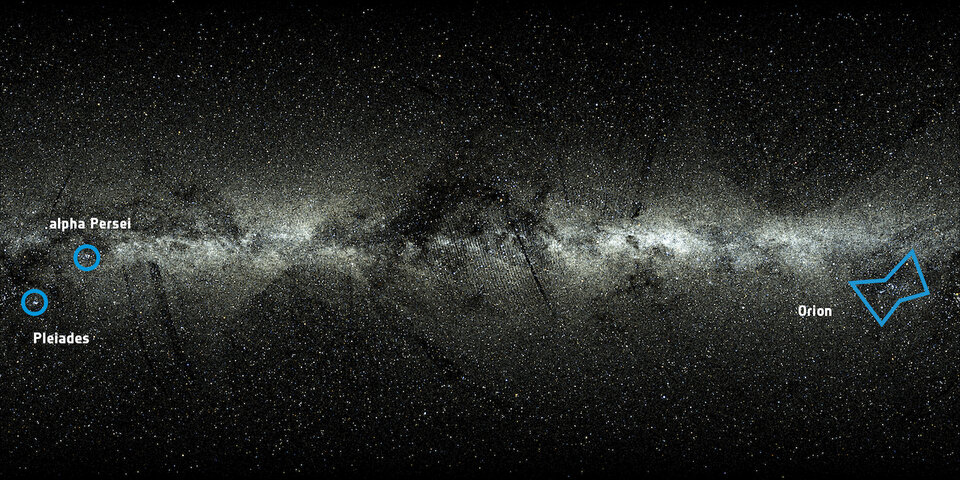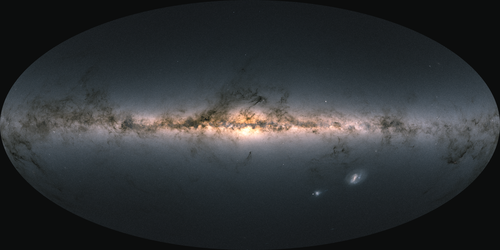The future of the Orion constellation
A new video, based on measurements by ESA’s Gaia and Hipparcos satellites, shows how our view of the Orion constellation will evolve over the next 450 000 years.
Stars are not motionless in the sky: their positions change continuously as they move through our Galaxy, the Milky Way. These motions, too slow to be appreciated with the naked eye over a human lifetime, can be captured by high-precision observations like those performed by ESA’s billion-star surveyor, Gaia.
By measuring their current movements, we can reconstruct the past trajectories of stars through the Milky Way to study the origins of our Galaxy, and even estimate stellar paths millions of years into the future.
This video provides us with a glimpse over the coming 450 000 years, showing the expected evolution of a familiar patch of the sky, featuring the constellation of Orion, the Hunter.
The portion of the sky depicted in the video measures 40 x 20º – as a comparison, the diameter of the full Moon in the sky is about half a degree.

Amid a myriad of drifting stars, the shape of Orion as defined by its brightest stars is slowly rearranged into a new pattern as time goes by, revealing how constellations are ephemeral.
The red supergiant star Betelgeuse is visible at the centre towards the top of the frame at the beginning of the video (represented in a yellow–orange hue). According to its current motion, the star will move out of this field of view in about 100 000 years. The Universe has a much harsher fate in store for Betelgeuse, which is expected to explode as a supernova within the next million of years.
More of the stars shown in this view will have exploded as supernovas before the end of the video, while others might be still evolving towards that end, like Orion’s blue supergiant, Rigel, visible as the bright star in the lower left, or the red giant Aldebaran, which is part of the constellation Taurus, and can be seen crossing the lower part of the frame from right to left.
Many new stars will also have been born from the Orion molecular cloud, a mixture of gas and dust that is not directly seen by Gaia – it can be identified as dark patches against the backdrop of stars – but shines brightly at infrared wavelengths. The birth and demise of stars are not shown in the video.
The Hyades cluster, a group of stars that are physically bound together and are also part of the Taurus constellation, slowly makes its way from the lower right corner to the upper left.
The new video is based on data from the Tycho–Gaia Astrometric Solution, a resource that lists distances and motions for two million stars in common between Gaia’s first data release and the Tycho-2 Catalogue from the Hipparcos mission. Additional information from ground-based observations were included, as well as data from the Hipparcos catalogue for the brightest stars in the view.
This video provides a zoomed-in view on a specific portion of the sky. The evolution of two million stellar positions on the entire sky is shown here.













